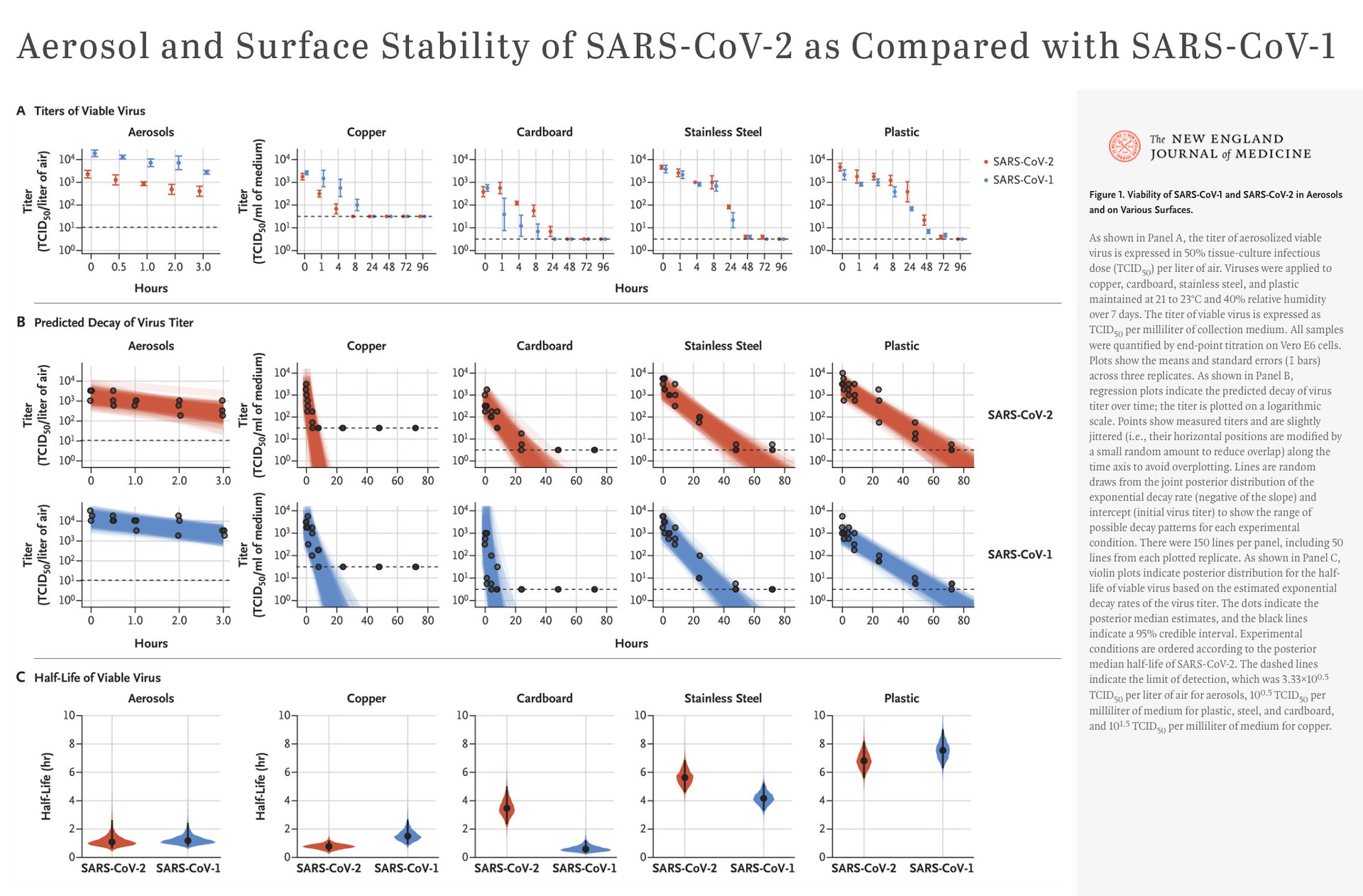What is Antimicrobial Copper?
Antibacterial copper, the most powerful natural antibacterial substance
What is Antimicrobial Copper?
Antibacterial activity naturally occurs in copper or copper alloys containing more than 60% of copper. It is effective in preventing cross-infection with bacteria and viruses such as Escherichia coli and food poisoning bacteria and is the most powerful non-toxic, human-friendly natural antibacterial material.
In the United States alone, about 2 million people each year have secondary infections in healthcare facilities, and about 100,000 people die from it.
Worldwide, infections in this medical institution are causing astronomical socio-economic costs. A clinical trial conducted with the support of the U.S. Department of Defense revealed that patients treated in intensive care units equipped with antimicrobial copper products reduced the probability of cross infections by up to 70%.
Copper and copper content 60% antimicrobial copper, which is effective in the above copper alloys, is a natural antibacterial property of copper itself, and it eradicates 99.9% of various bacteria that cause healthcare-associated infections within 2 hours, it is excellent in preventing infectious diseases such as cross infections. By actively using these antibacterial coppers in daily life, not only can you lead a hygienic environment and a healthy life, but you can also reduce the socio-economic costs of secondary infection.
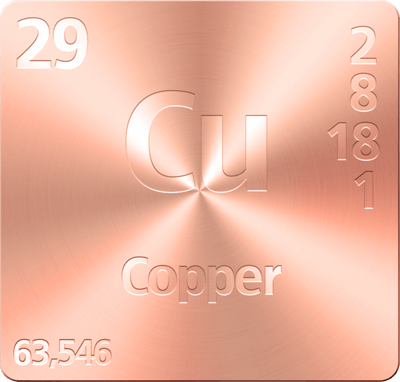
The process of Bacteria Dying on K Copper Plus
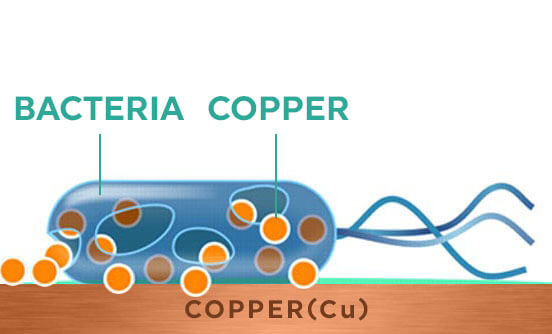
A
Bacteria recognises copper ions as essential nutrients and absorbs them, the copper ions penetrates and causes cell damage.
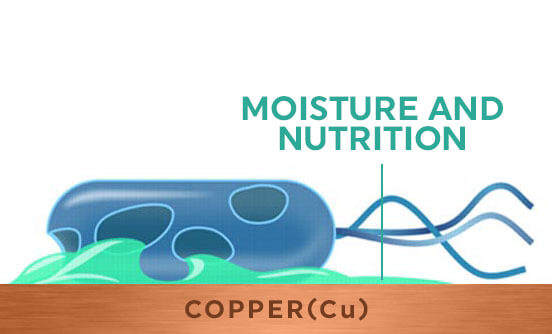
B
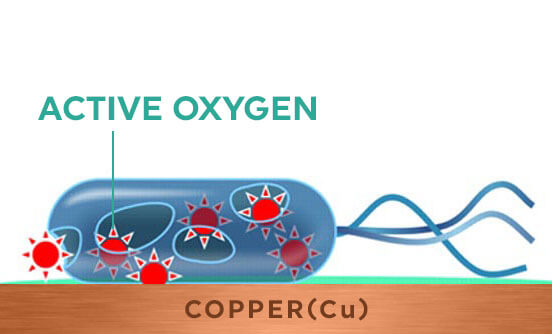
C
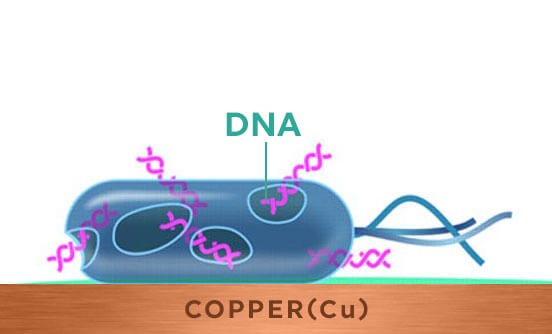
D
Effect of Antimicrobial Copper?
Comparison test of the antibacterial performance of representative inorganic materials
99.9% antibacterial activity confirmed within 2 hours in copper only
(More than 90% extinct within 30 minutes)

Test results of contactable objects in the hospital.
Reduction of pathogens/bacteria by more than 90% on the surface of copper products
No super-bacteria MRSA and VRE were detected
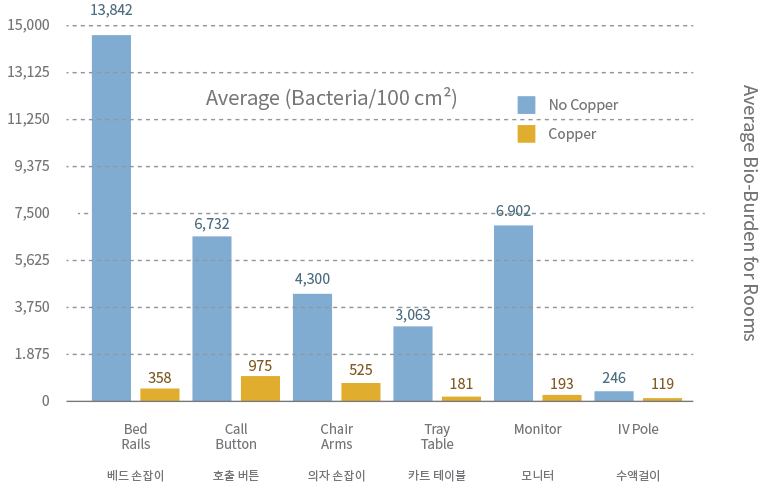

Copper (Cu) is the most traditional antimicrobial material used throughout time
Copper has been used to sterilize drinking water and treat patients in ancient Egypt and has been found to contribute to the prevention of food poisoning by being used as an ingredient in 19th-century tableware.
History of Antimicrobial Copper Plastic
Antimicrobial Copper
| 1994 | The University of Southampton demonstrated antimicrobial property of copper and copper alloy against Legionella pneumophila. | |
| 2000 | Antimicrobial property of copper and copper alloy against Escherichia coli was demonstrated. | |
| 2006 | Antimicrobial property of copper and copper alloy against Methicillin-resistant Staphylococcus aureus (MRSA) was demonstrated. | |
| 2007 | Antimicrobial property of copper and copper alloy against C. difficile was demonstrated. | |
| 2007 | Antimicrobial property of copper and copper alloy against influenza A (H1N1) was demonstrated. | |
| 2007 | About 300 alloys were registered by the U.S. EPA. | |
| 2009 | Antimicrobial property of copper and copper alloy against VRE was demonstrated. | |
| 2011 | Asan Medical Center in South Korea conducted a laboratory research on MRSA and VRE. | |
| 2012 | Eradication of MRSH was demonstrated. | |
| 2013 | Eradication of norovirus was demonstrated. | |
| 2014 | Suppression of avian influenza (AI) was demonstrated. | |
| 2015 | Inactivation of MERS virus was demonstrated. | |
| 2020 | Inactivation of SARS CoV-2 COVID – 19 spread was demonstrated |
Antimicrobial Copper Pathogen Test
Acinetobacter baumannii
Adenovirus
Aspergillus niger
Candida albicans
Campylobacter jejuni
Clostridium difficile
Enterobacter aerogenes
Escherichia coli O157:H7
Helicobacter Pylori
Influenza A (H1N1)
Legionella pneumophila
Listeria monocytogenes
Klebsiella pneumoniae
MRSA
Mycobacterium tuberculosis
Poliovirus
Pseudomonas aeruginosa
Salmonella enteritidis
Staphylococcus aureus
Tubercle bacillus
Vancomycin-resistant enterococcus (VRE)
+many more
Film Products
K Copper Plus Film is available in various sizes as either an adhesive or non-adhesive film as well as heat shrink tubing.

